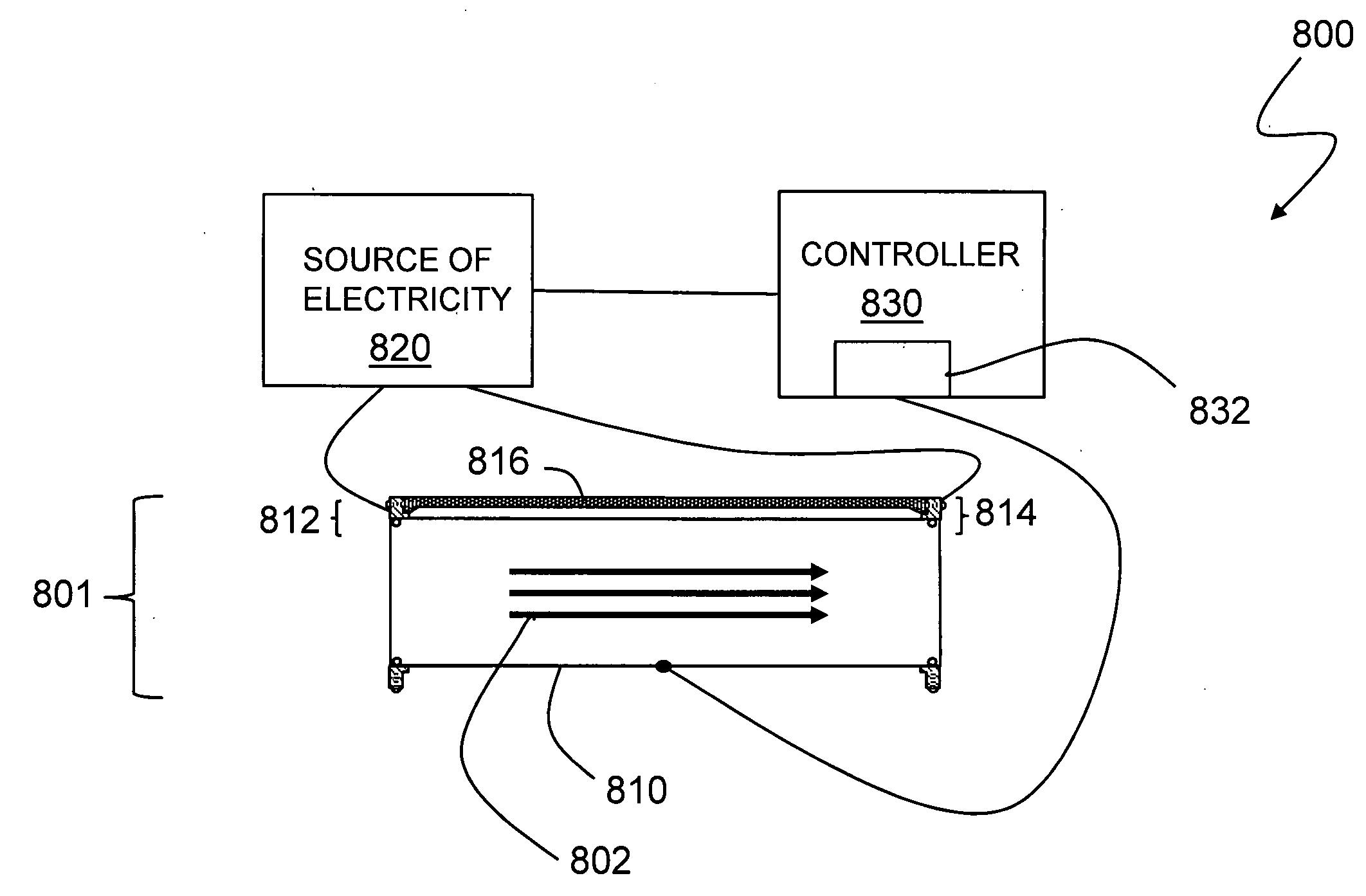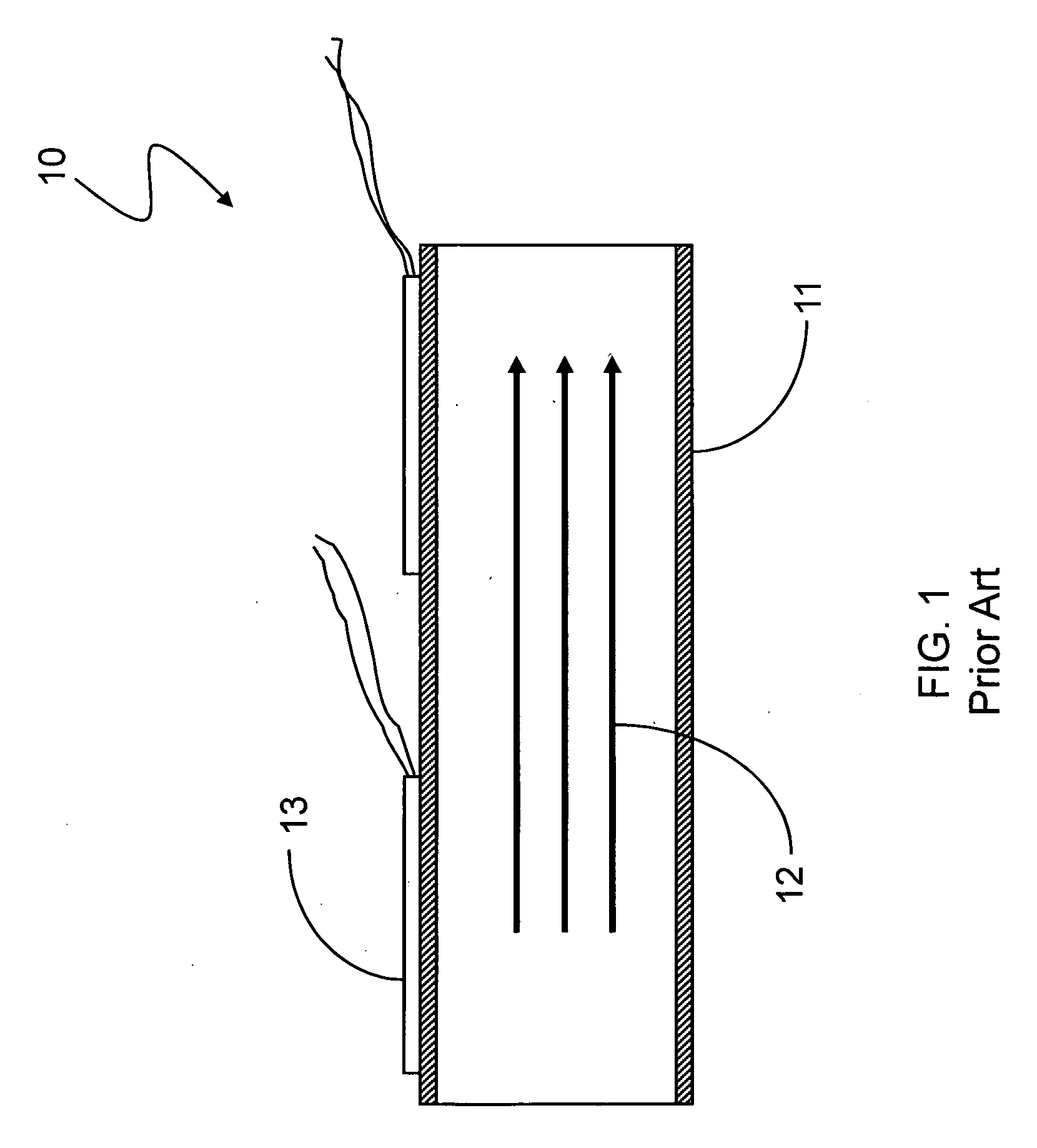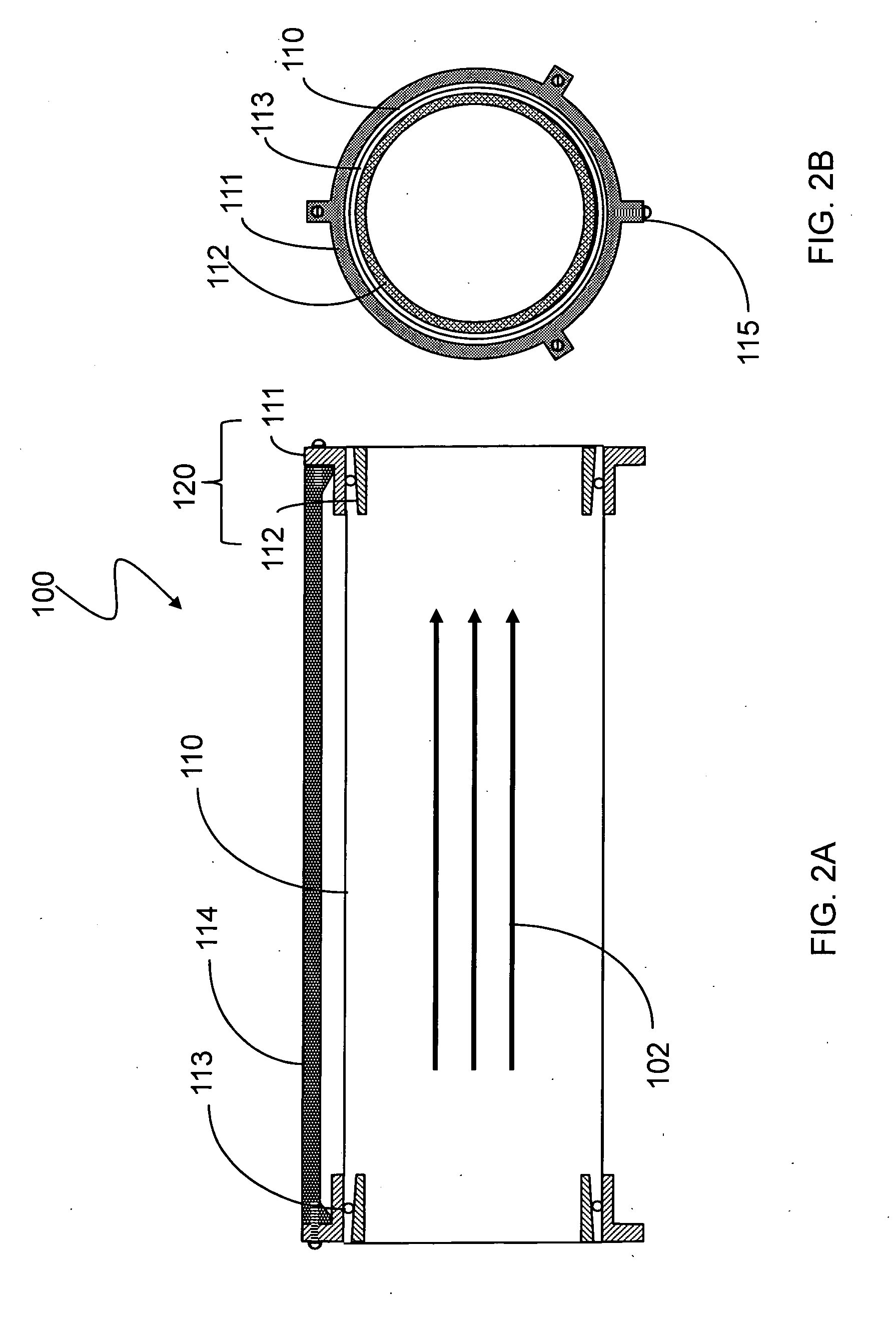Flash heating for tubing
a technology of flash heating and tubing, which is applied in the direction of steam generation using steam absorption, particle separator tubes, combustion air/fuel air treatment, etc., can solve the problems of equipment downtime, limit the maximum temperature that is acceptable for the sample tube, and the possibility of decomposition into unwanted substances, etc., to achieve the effect of improving the transport of electricity
- Summary
- Abstract
- Description
- Claims
- Application Information
AI Technical Summary
Benefits of technology
Problems solved by technology
Method used
Image
Examples
embodiment 400
[0052]FIG. 5 is a schematic diagram of an embodiment 400 of the system described herein in which a cylindrical foil tube 410 is joined at an angle to another cylindrical foil tube 420 in order to make a tee joint. The tee-shaped junction of the two tubes may be at any desirable angle, including, for example, a right angle. A clamping mechanism at the end of the cylindrical foil tube 410 may include a shaped cylindrical ring 411 and a circular spring and / or a snap ring 412. The cylindrical foil tube 410 and its clamping mechanism may be inside and squeezed against the inside surface of the other cylindrical foil tube 420. An external clamp ring 413 may be employed to maintain the squeeze force and create a gas tight seal at the joint using a combination of screw and spring 414. The external clamp ring 413 may also provide an attachment point to complete the circuit for passing electricity through the cylindrical foil tube 410 and / or other cylindrical foil tube 420.
embodiment 500
[0053]FIGS. 6A and 6B are schematic diagrams of an embodiment 500 of the system described herein in which a thin foil blank-off 516 is added to the end of the thin foil cylinder 510. FIG. 6A is a side cross-sectional view and FIG. 6B is an end view. If combined with the thin foil tee-connection illustrated in FIG. 5, an angled thin foil joint may also be provided. The thin foil 510 may be formed into a cylinder using a clamping mechanism provided by a cylindrical ring 511 and a circular spring and / or snap ring 512. One or more stiffeners 514 may be used to impart structural stability. A square or rectangular shaped electrically insulating end plate 515 may be squeezed against the cylindrical ring 511. The electrically insulating end plate 515 prevents electrical current that is passing through the thin foil blank-off 516 from interfering and shorting out electrical current that is passing through the thin foil 510. A clamping ring 517 may squeeze and seal the thin foil blank-off 516...
PUM
| Property | Measurement | Unit |
|---|---|---|
| Melting point | aaaaa | aaaaa |
| Cooling rate | aaaaa | aaaaa |
| Cooling rate | aaaaa | aaaaa |
Abstract
Description
Claims
Application Information
 Login to View More
Login to View More - R&D
- Intellectual Property
- Life Sciences
- Materials
- Tech Scout
- Unparalleled Data Quality
- Higher Quality Content
- 60% Fewer Hallucinations
Browse by: Latest US Patents, China's latest patents, Technical Efficacy Thesaurus, Application Domain, Technology Topic, Popular Technical Reports.
© 2025 PatSnap. All rights reserved.Legal|Privacy policy|Modern Slavery Act Transparency Statement|Sitemap|About US| Contact US: help@patsnap.com



